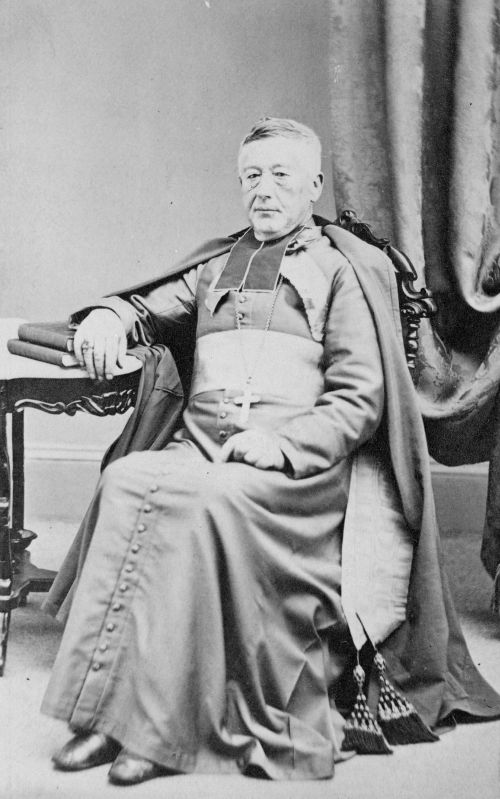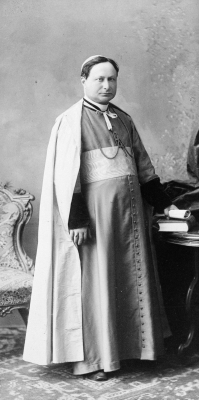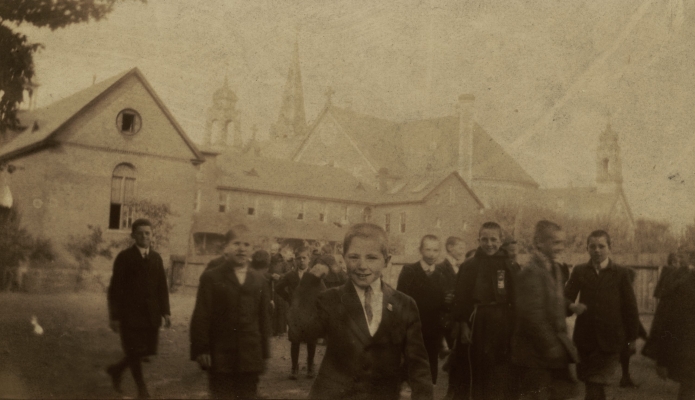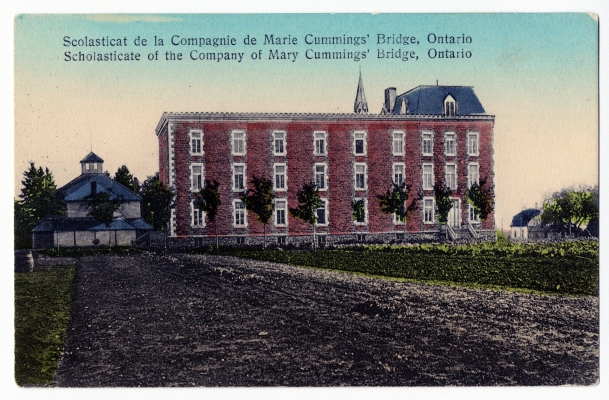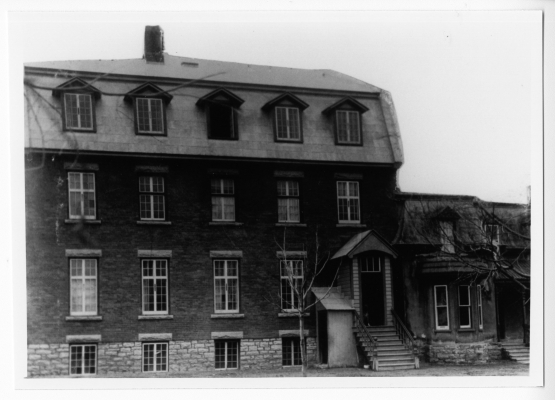John By begins constructing the Rideau Canal in the fall of 1826. In the following years, Patrick Haran celebrates Mass in Uppertown, before disappearing without a trace in 1829. His replacement, Angus Macdonnell, officiates on the upper level of a small York Street market in Lowertown, where the majority of Catholics live. He lobbies for the construction of a small wooden church in 1831, at the intersection of Sussex and St. Patrick streets. Ten years later, construction begins on its replacement, the Notre-Dame Cathedral, modelled after St. Patrick’s Church in Québec. In 1843, Bytown has 2,364 Catholics, including 1,064 French Canadians. Of these, only 35 live in Upper Town, favoured mainly by the Protestant and British community.
This first Bytown parish experiences difficult beginnings. Several priests cycle through in succession, including a false priest with no preparation at all for the priesthood. The episcopal offices of Montréal and Kingston have jurisdiction over the vast territory of the Outaouais, but they are far from Bytown. The parish is left somewhat to itself, as are the many missions that multiply in the region alongside the rapidly expanding forestry industry.
In 1847, a diocese is established to ensure closer supervision of the priests and missionaries. The Church entrusts it to Father Joseph-Bruno Guigues, an Oblate who has been working only a short time in Montréal. Guigues settles in Bytown the following year, and he describes the place in these unflattering terms:
The priests were renewed too often, and many of them have exemplified scandal. This city was largely formed by poor, indebted people who left their parishes burdened by scandal. Hence the frightful disorders to which this city bears witness.1
Religious life gets organized under Bishop Guigues’ leadership, a development which draws other religious communities to come and settle in Bytown. The Grey Nuns of the Cross arrive first (1845), followed by the Brothers of the Christian Schools (1864). Parishes are also added: Saint Patrick in 1852, set up on Sparks Street in an abandoned Methodist Church; St. Joseph’s, founded in 1856 and expanded in 1866; and Saint-Jean-Baptiste, established on May 31, 1872, while its church is consecrated two months later by Msgr Guigues. In the same year, he founds a second parish in the eastern part of Lowertown: Sainte-Anne Parish with a cathedral and a population dispersed over a large area. “All the inhabitants east of Nelson and Rose streets had to walk nearly a mile or so to attend the Sunday Mass, which sometimes became very difficult during the seasons of winter and the thaw period.”2 The church is built the following year on St. Patrick Street.
The population of Catholics increases considerably in Ottawa. In 1874, they number 12,735, including 7,214 French Canadians. Ottawa has already become established as a religious centre in French Ontario, as well as in French Canada.
1 J.-E.-B. Guigues, “Notes sur l’état du diocèse en 1848.” cited by Robert Choquette, L’Église catholique dans l’Ontario français du dix-neuvième siècle, Ottawa, University of Ottawa Press, 1984, p. 140 (translated from the original).
2 Lucien Brault, Sainte-Anne d’Ottawa. Cent ans d’histoire. 1873-1973. Ottawa, 1973, p. 11 (translated from the original).
Msgr Joseph-Bruno Guigues, first bishop of the Bytown diocese, 1865.
Source : Library and Archives Canada, Canada, Visual material [graphic material, philatelic record] (R9271-5-2-E), C-021864.
